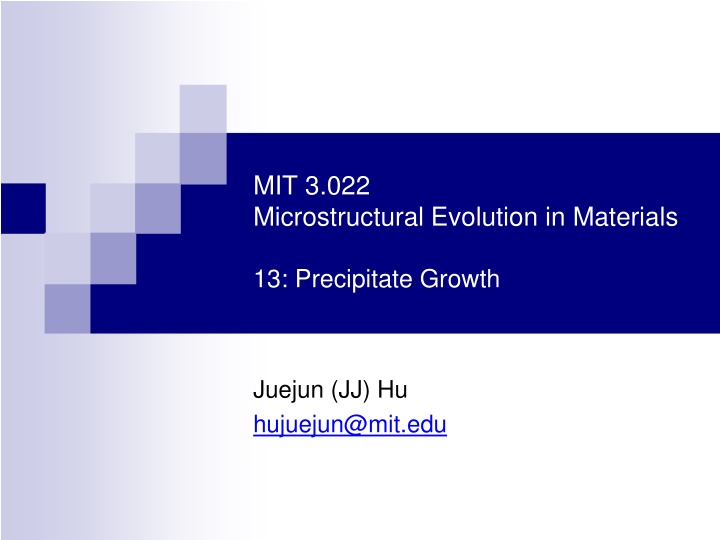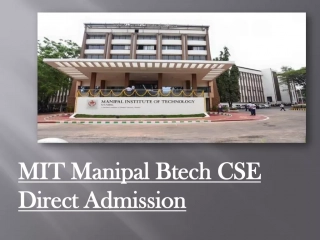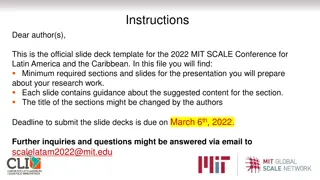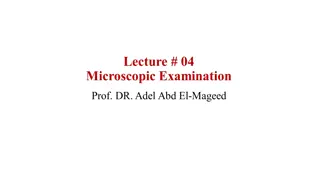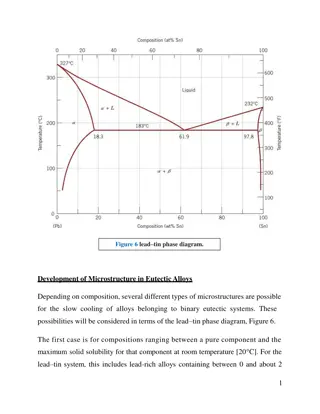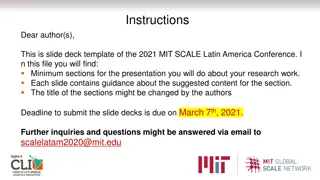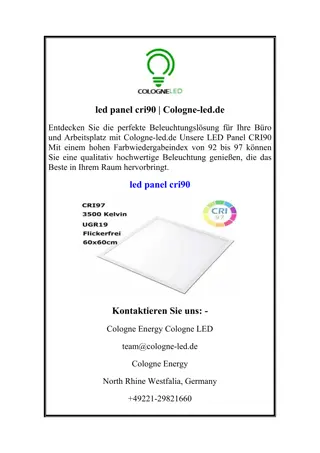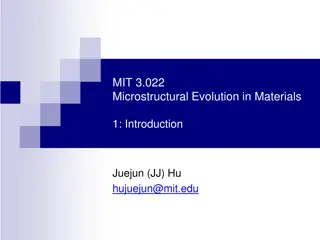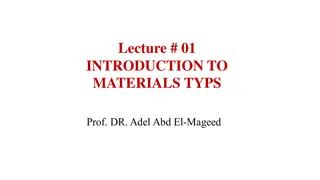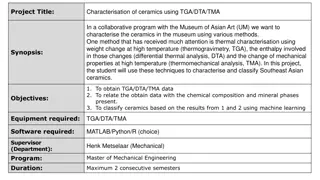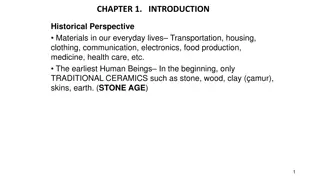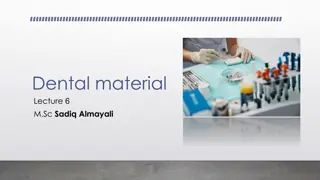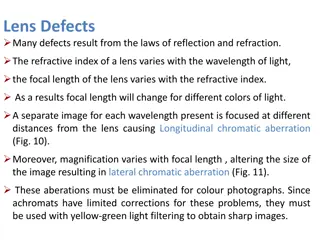MIT 3.022 Microstructural Evolution in Materials
This content explores the phenomenon of precipitate growth within materials, specifically focusing on microstructural evolution. The study delves into the mechanisms and factors influencing the growth of precipitates, shedding light on their impact on material properties. Through in-depth analysis, this research provides valuable insights into the intricate processes that govern the evolution of materials at a microstructural level.
Download Presentation

Please find below an Image/Link to download the presentation.
The content on the website is provided AS IS for your information and personal use only. It may not be sold, licensed, or shared on other websites without obtaining consent from the author.If you encounter any issues during the download, it is possible that the publisher has removed the file from their server.
You are allowed to download the files provided on this website for personal or commercial use, subject to the condition that they are used lawfully. All files are the property of their respective owners.
The content on the website is provided AS IS for your information and personal use only. It may not be sold, licensed, or shared on other websites without obtaining consent from the author.
E N D
Presentation Transcript
MIT 3.022 Microstructural Evolution in Materials 13: Precipitate Growth Juejun (JJ) Hu hujuejun@mit.edu
Spherulite nucleation and growth Video credit: Ian Chesser
Classifications of precipitate growth Growth from a single- component solution Faceted surface Faceted precipitates: 2-D nucleation controlled Precipitates with atomically rough surfaces: interface kinetics controlled Growth from a binary system with miscibility gap Diffusion controlled
Classifications of precipitate growth Growth from a single- component solution Non-faceted surface Faceted precipitates: 2-D nucleation controlled Precipitates with atomically rough surfaces: interface kinetics controlled T Growth from a binary system with miscibility gap Diffusion controlled 100% A 100% B
Continuous growth Non-faceted surface Continuous growth on atomically rough surface: plenty of surface sites for atom attachment Growth rate determined by atom attaching rate h Ea + E kT = exp a L S Liquid E G G = a V exp V S L kT Solid G E kT = exp V a h kT Atomic location
Continuous growth Non-faceted surface Volumetric Gibbs free energy change H TV = m T G V m Growth rate (interface velocity) Ea = R V S h Liquid E kT G = V exp a B T Solid 2 V kT H = S m B 2 Atomic location m
Growth rate dependence on supercooling exp E kT a T Driving force limited regime Diffusion limited regime exp E kT a R T Supercooling T There is no supercooling threshold for continuous growth
Impact of supercooling on nucleation and growth Metastable zone of supercooling Phase transition Driving force: supercooling Both processes are thermally activated Tm Supercooling
Time-temperature-transformation (TTT) diagram Driving force (supercooling) limited Diffusion limited R. Busch, JOM52, 39-42 (2000)
2-D nucleation on faceted surfaces Faceted surface Large surface area 2-D nucleus 2-D nucleus R. Gerum et al. 2013 New J. Phys. 15, 125022, CC-BY 3.0 The origin of traveling waves in an emperor penguin huddle, New J. Phys.15, 125022 (2013)
Free energy barrier for 2-D nucleation Gibbs free energy change of cluster formation r h Volumetric term 2-D nucleus H T = 2 m G T r h V m Surface term = 2 G rh S H T = + = + 2 2 m G G G T r h rh 2 D V S m H H T 2 1 T h T = * 2 = m r * 2 m T G D D T m m
Free energy barrier for 2-D nucleation Gibbs free energy change of cluster formation G r S Volumetric term G2D H T = 2 m G T r h V 2 G r m V Surface term = 2 Nucleus radius r G rh S H T = + = + 2 2 m G G G T r h rh 2 D V S m H H T 2 1 T h T = * 2 = m r * 2 m T G D D T m m
Growth rate on faceted planes In-plane growth rate is much higher than nucleation rate Growth rate scales with 2-D nucleation rate Nucleation rate I2D = Number of 2-D nuclei with size just under r*2D Rate of atoms hopping to the nuclei * G kT 2-D nucleus e p x 2 R I D 2 D h E 1 1 T ,2 a D e x p e xp kT kT Driving force term Diffusion term
Growth rate dependence on supercooling 2-D Continuous growth Diffusion limited regime nucleation exp 1 T exp E ,2 a D T kT Supercooling T Supercooling threshold
Screw dislocation assisted growth on facets Growth via atom attachment to the ledge around a screw dislocation without requiring 2-D nucleation ( ) 2 Growth rate R T Spiral growth 2-D nucleation Image Credit: H. Henry Teng http://home.gwu.edu/~hteng/resareaone.html
Precipitate growth from a binary solution Precipitates generally have compositions different from the solution Continuous phase B Mass transport via diffusion is the rate limiting step T interface 100% A 100% B
Precipitate growth kinetics Local equilibrium assumption The phases and are in chemical equilibrium with each other locally on the interface C C0 C0 C T x C C A B
Precipitate growth kinetics Linear concentration assumption Flux of B atoms: C L C C = 0 F D B B L Growth rate (interface velocity): C0 =dx dt R ( ) = C C dx F dt C B B C D L C C F = = 0 R B C C C x
Precipitate growth kinetics Mass conservation Excess B in the phase all comes from the phase ( 0 C C x C L ) ( ) = C C 0 2 L D C0 = R K B where 2 x ( ) 2 C C C C = 0 K C ( )( ) C C 0 1 2 KD = = , x KD t R B x B t
Precipitate growth kinetics Concentration relationships C0 C C C C C C 0 0 C C T 0 ( ) 2 C C C C = 0 K ( )( ) C C T 0 ( ( ) ) 2 C C 0 2 T 2 C C D A B C C R T B t
Growth rate dependence on supercooling E T , a B kT exp D B 2 Driving force limited regime Diffusion limited regime D R T B t Supercooling T There is no supercooling threshold for diffusion-limited growth
Summary Single-component system Faceted (defect-free) 2-D nucleation 1 exp T Type of precipitate Binary system Non-faceted Rate limiting factor Interface kinetics Diffusion D T D D T B Growth rate 2 D t Supercooling threshold Yes No No 1) Presence of screw dislocations can lead to spiral growth; 2) Transition to continuous growth can occur at large supercooling The formalism above does not apply to the Spinodal region Comments
List of symbols T supercooling, defined as the difference between the equilibrium and the actual phase transition temperatures T temperature k Boltzmann constant (1.38 10-23m2kg s-2K-1) vibrational frequency of an atom h frequency of successful hops of an atom, i.e. atom attaching rate to an atomically rough surface L S / S L frequency of successful hops of an atom from the liquid / solid phase to the solid / liquid phase Ea activation energy of atomic hopping from the liquid phase to the solid phase surface/interface energy
List of symbols volumetric Gibbs free energy difference of an atom in solid and liquid phases Hm enthalpy of fusion per unit volume Tm melting point R precipitate growth rate measured by the velocity of the solid-liquid interface V G V volume occupied by one atom S surface density of atoms, i.e. number of atoms per unit surface area GV / GS volumetric / surface contributions to Gibbs free energy change of phase transition
List of symbols r radius of a 2-D nucleus h height of a 2-D nucleus G2D Gibbs free energy change associated with formation of a 2-D nucleus r * critical 2-D nucleus size 2D G energy barrier towards 2-D nucleation 2D * I2D 2-D nucleation rate Ea,2D activation energy of atomic diffusion to 2-D nuclei C0 / C / C concentration of component B in the sample / in the precipitate phase / in the continuous phase that equilibrates with the precipitate phase
List of symbols FB diffusion flux of component B DB diffusion coefficient of component B in the phase t time L length of the region near the surface of phase precipitates where the phase composition deviates from the bulk continuous phase composition x size of the precipitate, defined by the position of the interface between the precipitate and continuous phases Ea,B activation energy of diffusion for component B
